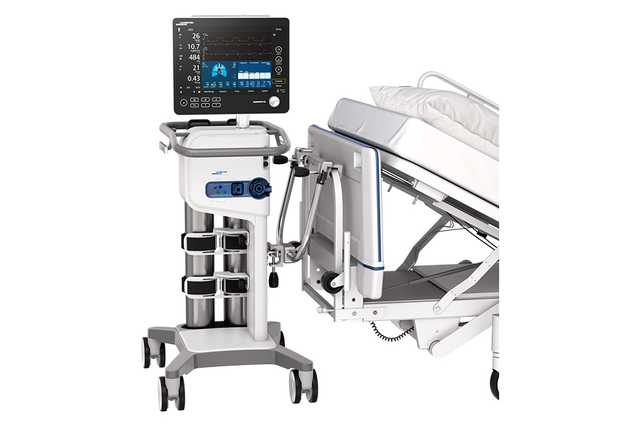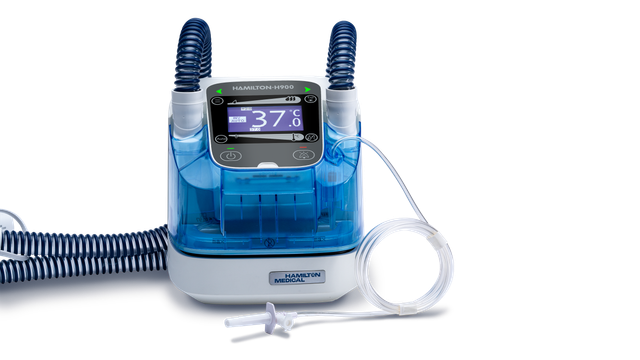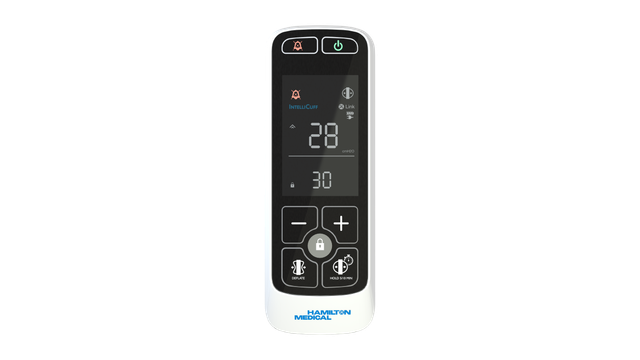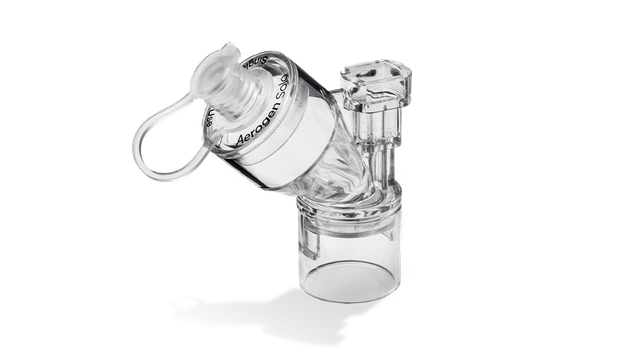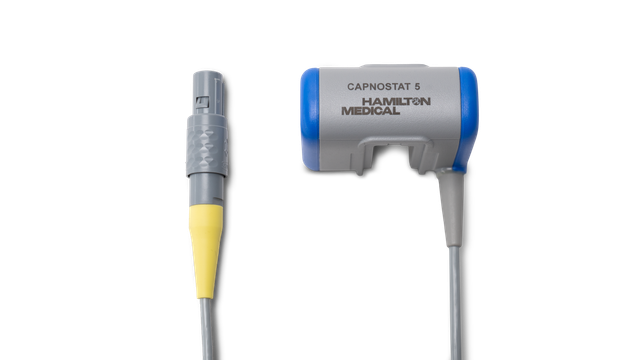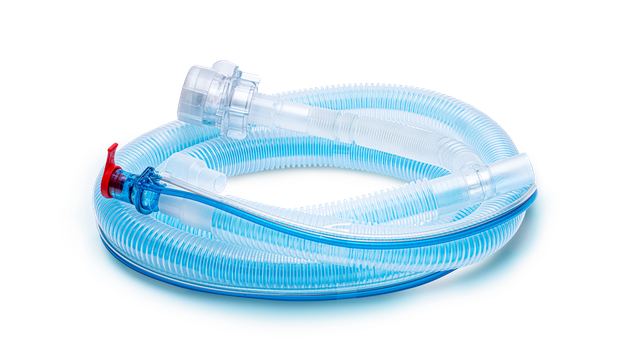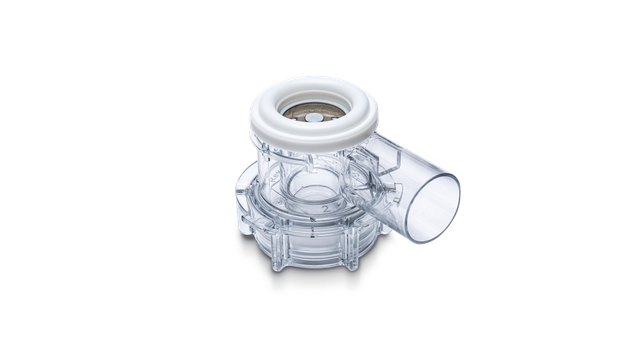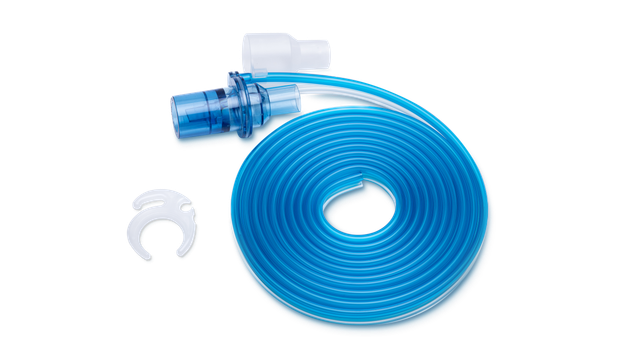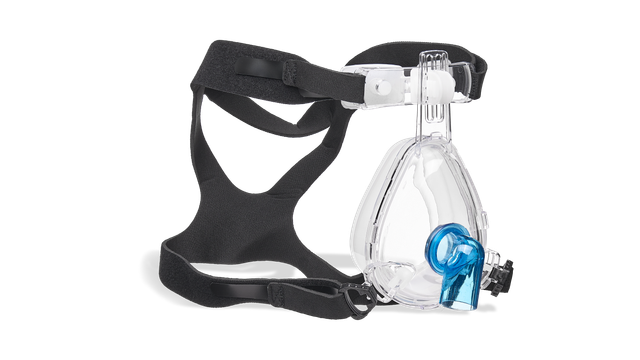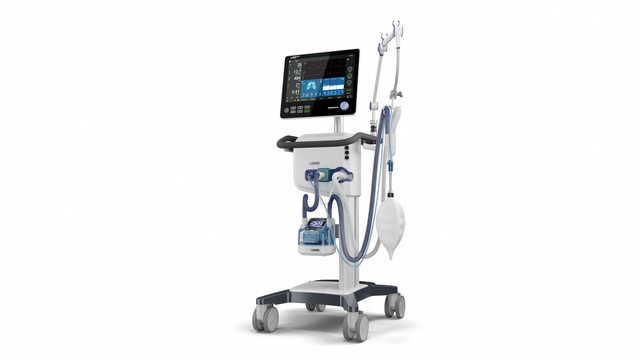
Nuestro respirador de UCI inteligente. La nueva generación

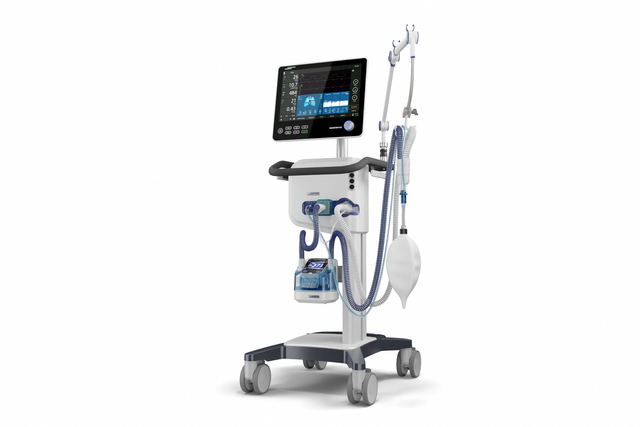
Nuestro respirador de UCI inteligente. La nueva generación
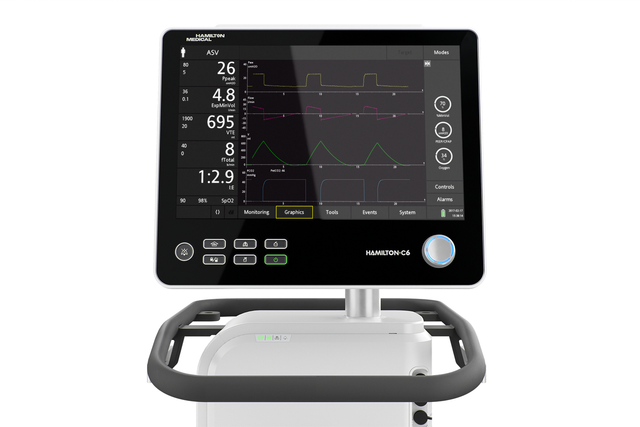
En pantalla grande. Datos de ventilación importantes de un solo vistazo
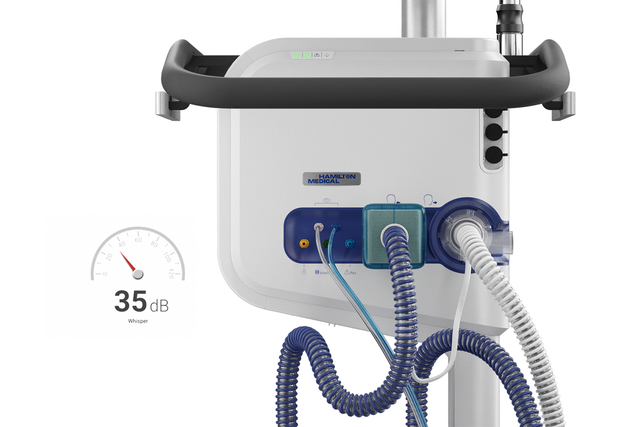
¡Shhh! No despierte a sus pacientes
Con un nivel promedio de ruido de 35 dB, es el más silencioso de nuestros respiradores.
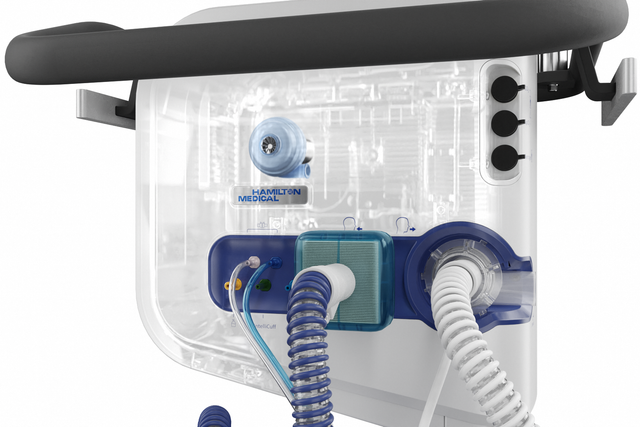
Garantizada hasta el final. Nuestra turbina de alto rendimiento
Con su potente turbina, este respirador para UCI es completamente independiente de una toma de salida de aire de alta presión y de los compresores externos. Esto le brinda la máxima movilidad para que pueda desplazarse libremente por el hospital. Ofrecemos también una garantía para la turbina durante la vida útil prevista del respirador HAMILTON‑C6.
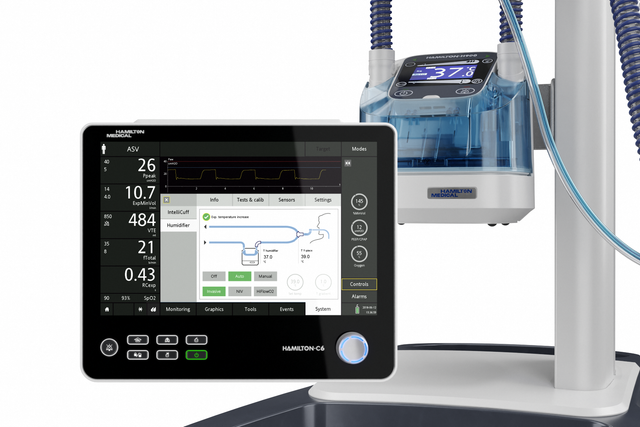
Estado y controles del humidificador. En la pantalla del respirador
Maneje cómodamente el humidificador HAMILTON‑H900 directamente desde la pantalla del respirador. El HAMILTON‑H900 se sincroniza con el respirador y selecciona automáticamente el modo de humidificación en función del modo de ventilación.
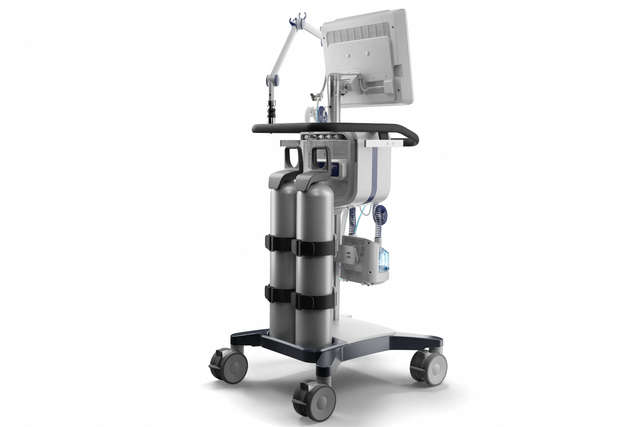
Extraordinariamente independiente. No requiere aire comprimido y funciona con batería
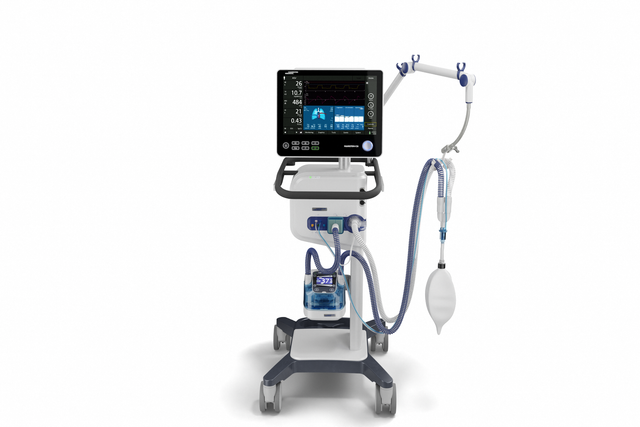
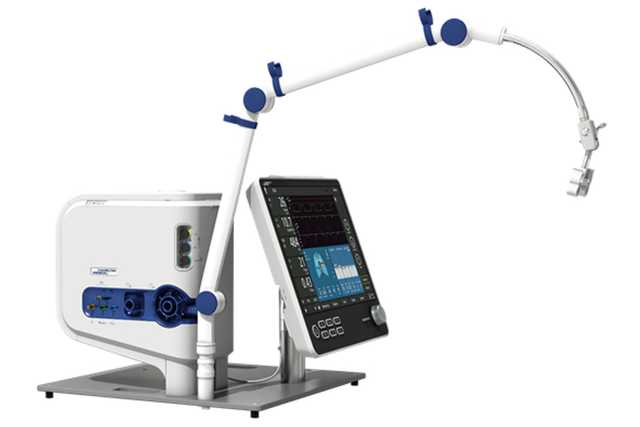
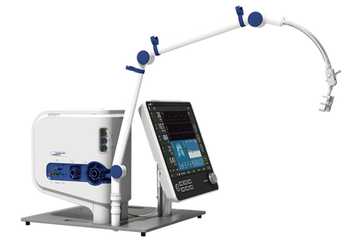
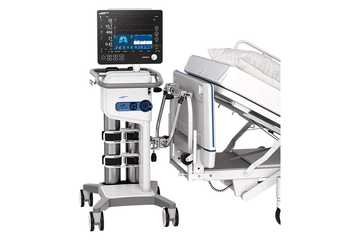
Diseñado para ser diferente. Seleccione la configuración que mejor se adapte a sus necesidades
Este diseño es el más flexible. Puede colocarlo en un carrito, acoplarlo a un brazo colgante, desmontarlo del cuerpo o colocarlo sobre una repisa.
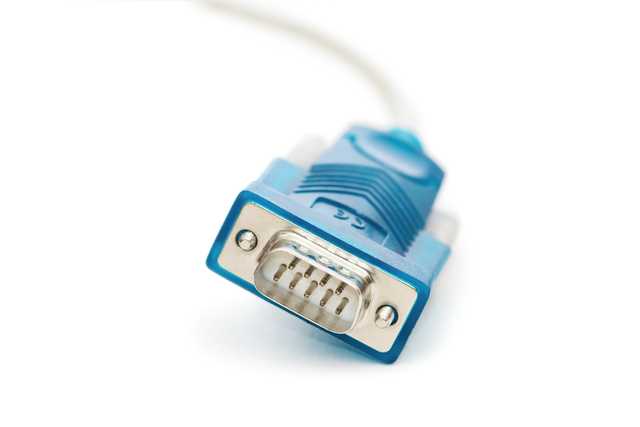
Datos para una valoración completa. Soluciones de conectividad completa para PDMS, monitorización y SMU
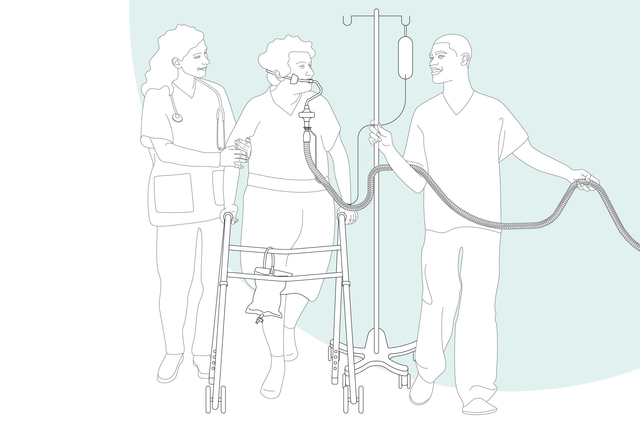
Cuanto antes, mejor. Movilización temprana
Con su turbina de alto rendimiento, funcionamiento con batería, tamaño compacto y modos de ventilación de vanguardia, el HAMILTON‑C6 también acompaña a sus pacientes en sus primeros pasos de movilización.
¿Le gustaría saber más?
Explore el modelo 3D
Descubra el respirador para UCI HAMILTON‑C6 desde todos los ángulos y haga clic en los puntos de información para obtener más detalles.
Para información rápida
- Estándar
- Opcional
- No disponible
| Grupos de pacientes | Adultos/pediátricos, neonatos |
|---|---|
| Dimensiones (ancho x largo x alto) | 423 x 250 x 415 mm (monitor) 360 x 250 x 394 mm (unidad de ventilación) 640 x 560 x 1400 mm (carro incluido) |
| Peso | Monitor (panel de interacción), sin montaje en repisa: 7,8 kg Monitor con montaje en repisa: 10 kg Unidad de ventilación con montaje en repisa: 10,5 kg Unidad de ventilación, monitor y carro: 46 kg |
| Resolución y tamaño del monitor | 431,8 mm, diagonal 1920 x 1200 píxeles |
| Monitor desmontable | |
| Tiempo de funcionamiento de la batería | 1,5 h con una batería 3 h con dos baterías |
| Batería intercambiable en funcionamiento | |
| Suministro de aire | Turbina integrada cubierta con garantía durante la vida útil prevista del respirador HAMILTON‑C6 |
| Conector O2 | DISS (CGA 1240) o NIST |
| Conectividad | Tres puertos COM, dos puertos USB, DVI, llamada de enfermera |
| Volumen | 37 dB en funcionamiento normal |
| Control por flujo y por volumen | |
|---|---|
| Volumen objetivo, control por presión adaptable | |
| Ventilación inteligente | ASV®, INTELLiVENT®‑ASV® (opcional) |
| Ventilación no invasiva | |
| Flujo alto | |
| Visualización de la mecánica pulmonar (Pulm. dinámico) | |
|---|---|
| Visualización de la dependencia del respirador del paciente | |
| Medición de la presión esofágica | |
| Capnograma | |
| Monitorización de SpO2 |
| Evaluación de reclutamiento y reclutamiento pulmonar (P/V Tool Pro) | |
|---|---|
| Sincronización paciente‑respirador (IntelliSync+) | |
| Ventilación de RCP | |
| Módulo Hamilton Connect |
| Conexión remota al humidificador HAMILTON‑H900 | |
|---|---|
| Controlador de la presión del manguito IntelliCuff integrado | |
| Nebulizador neumático integrado | |
| Nebulizador Aerogen integrado | |
| Compatibilidad con el sistema de administración de anestésicos Sedaconda ACD‑S |
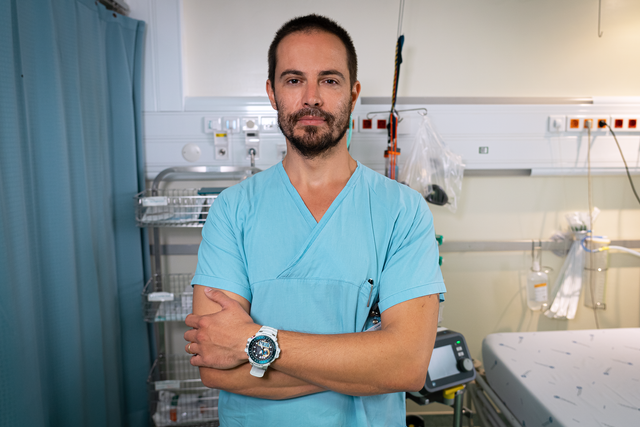
Testimonios de clientes
One of the pearls of these ventilators is the interface. I think the interface of the HAMILTON‑C6 has a completely new level of monitoring capabilities.
Dr. João Alves
Intensivist, Internal Medicine and Emergency Department since 2018
University Hospital Center Lisbon, Lisbon, Portugal
Para sus pacientes
ASV®: Adaptive Support Ventilation®. Para la adaptación constante del suministro
El modo de ventilación ASV ajusta de forma continua la frecuencia respiratoria, el volumen tidal y el tiempo inspiratorio respiración a respiración en función de la mecánica pulmonar y los esfuerzos del paciente las 24 horas del día, desde la intubación hasta la extubación.
INTELLiVENT®‑ASV. Para la asistencia a pie de cama
El modo de ventilación inteligente INTELLiVENT‑ASV controla continuamente la ventilación y la oxigenación del paciente.
Define la ventilación por minuto, así como los valores de PEEP y de oxigenación en función de los objetivos fijados por el médico y los datos fisiológicos del paciente.
IntelliSync®+. Para la sincronización entre paciente y respirador
Gracias al continuo análisis de las formas de onda cientos de veces por segundo, IntelliSync+ permite detectar los esfuerzos del paciente y realiza ciclos inmediatamente para iniciar la inspiración y la espiración en tiempo real.
IntelliSync+ se aplica a la ventilación invasiva y no invasiva con independencia del modo de ventilación.
P/V Tool®. Para la evaluación y el reclutamiento pulmonares
Puede utilizar P/V Tool para evaluar la capacidad de reclutamiento pulmonar y determinar la estrategia de reclutamiento.
Por otro lado, también puede usarse para llevar a cabo una maniobra de reclutamiento de inspiración mantenida y para medir el aumento del volumen pulmonar.
Monitorización de la presión transpulmonar. Para datos obtenidos desde el interior
La monitorización de la presión transpulmonar permite optimizar el valor de PEEP, el volumen tidal y la presión inspiratoria (
Se usa junto con P/V Tool para valorar la capacidad de reclutamiento pulmonar y realizar maniobras de reclutamiento.
Acceso remoto al humidificador. Para su comodidad
La exclusiva opción de conectividad del respirador le permite utilizar el humidificador HAMILTON‑H900 (
El humidificador también puede elegir automáticamente el modo de humidificación (invasiva, no invasiva o de flujo alto) en función del modo de ventilación seleccionado.
Nebulizador integrado. Para tratamientos adicionales
El nebulizador neumático integrado está totalmente sincronizado con los tiempos de inspiración y espiración.
Un nebulizador Aerogen integrado y sincronizado está disponible opcionalmente (
El suministro de una ligera nube de partículas medicamentosas en aerosol le ayuda a revertir el broncoespasmo, mejorar la eficiencia de la ventilación y reducir la hipercapnia (
IntelliCuff® integrado. Para la presión del manguito controlada
IntelliCuff mide constantemente y conserva de manera automática la presión en el manguito del tubo endotraqueal y del tubo de traqueotomía que haya establecido el usuario en tiempo real (
Terapia de cánulas nasales de flujo alto. Para fanáticos del O2
La terapia de cánulas nasales de flujo alto (
Capnografía volumétrica. Para CO2ntrol Freaks
La medición del flujo proximal y del CO2 permite a nuestros respiradores realizar novedosas capnografías volumétricas, lo cual es fundamental para la valoración de la calidad de la ventilación y la actividad metabólica.
Panel Estado ventil. Para aquellos listos para el destete
En el panel Estado ventil., aparecen seis parámetros relacionados con la dependencia del paciente del respirador, incluidas la oxigenación, la eliminación de CO2 y la actividad del paciente.
Un indicador flotante se mueve hacia arriba y hacia abajo en cada columna para mostrar el valor actual de un parámetro determinado.
Destete rápido. Para los independientes
La función Destete ráp. está integrada en el modo INTELLiVENT‑ASV y proporciona monitorización y control del estado del paciente de manera dinámica y continua para evaluar si el paciente está preparado para la extubación.
SBT automáticas. Para los espontáneos
Las pruebas de respiración espontánea (SBT) automatizadas forman parte de la función Destete ráp. del modo INTELLiVENT‑ASV y le ofrecen la opción de realizar SBT totalmente controladas.
Panel Pulm. dinámico. Para personas con perspectiva visual
El panel Pulm. dinámico muestra una representación gráfica en tiempo real de los siguientes datos de monitorización importantes:
- Compliance y resistencia
- Activación por parte del paciente
- SpO2
- Frecuencia de pulso
Bucles y tendencias configurables. Para estadísticos
El respirador puede mostrar un bucle dinámico en función de una combinación seleccionada de parámetros monitorizados. Con la función Tendencias, puede ver la información de tendencias que se muestra para los parámetros de monitorización durante el tiempo que usted seleccione.
El dispositivo almacena continuamente los parámetros monitorizados en su memoria, incluso cuando está en Standby.
Pulsioximetría. Para entusiastas de la SpO2
La opción SpO2 ofrece una medición de SpO2 no invasiva integrada y muestra los datos en el respirador para que pueda analizarlos cómodamente.
También ofrecemos una completa gama de sensores de SpO2.
Ventilación no invasiva de alto rendimiento. Para los que llevan mascarilla
Los modos de ventilación no invasiva ofrecen respiraciones espontáneas con ciclos de flujo y presión de soporte (modos NIV y NIV‑ST) y respiraciones obligatorias cicladas por tiempo y controladas por presión (NIV‑ST).
En comparación con los respiradores que utilizan aire comprimido, nuestros respiradores accionados por turbina son capaces de proporcionar flujos máximos elevados, lo que garantiza un rendimiento óptimo incluso con fugas importantes.
Modos nCPAP. Para los más pequeños
Los modos nCPAP están diseñados de tal manera que solo tendrá que fijar la presión CPAP que desee y, a continuación, se ajustará el flujo en función del estado del paciente y las posibles fugas. Así se evitan presiones máximas involuntarias, se garantiza una compensación eficaz de las fugas y se ayuda a reducir el consumo de oxígeno. El ajuste del flujo se lleva a cabo casi inmediatamente gracias a que la medición es altamente sensible.
Para usted
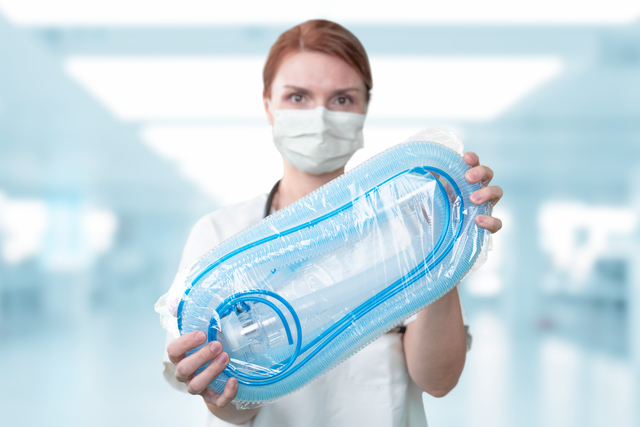
Premontado. Listo para usar
Nuestros equipos respiratorios premontados incluyen el material fungible esencial para utilizar el respirador, cómodamente empaquetado en una única bolsa.
Todo nuestro material fungible esencial se ha desarrollado especialmente para los respiradores de Hamilton Medical con garantía de calidad del fabricante.

Menos pulsadores que girar. Más adaptaciones para los pacientes
Para gestionar la ventilación, suele ser necesario configurar diversos parámetros, como la presión, el volumen, el disparo espiratorio e inspiratorio y la presión de manguito, entre muchos otros. Cada vez que cambia el estado del paciente, hay que realizar uno o incluso varios reajustes.
Para simplificar este proceso y reducir el uso de los pulsadores, hemos creado toda una gama de soluciones:
La ventilación asistida adaptable (ASV) es un modo de ventilación que adapta de forma continua la frecuencia respiratoria, el volumen tidal y el tiempo inspiratorio en función de la mecánica pulmonar y el esfuerzo del paciente. Se ha demostrado que ASV reduce la duración de la ventilación mecánica en varias poblaciones de pacientes con menos ajustes manuales (
Nuestro modo de ventilación inteligente INTELLiVENT‑ASV le permitirá olvidarse prácticamente de girar los pulsadores y limitarse a supervisar los datos, reduce el número de interacciones manuales con el respirador (
IntelliSync+ analiza de manera continua las señales de las formas de onda al menos cien veces por segundo. Esto permite que IntelliSync+ detecte el esfuerzo del paciente de manera inmediata e inicie la inspiración y la espiración en tiempo real, lo que sustituye los ajustes de disparo de inspiración y espiración convencionales.
Las soluciones convencionales para la gestión de la presión del manguito requieren que monitorice y ajuste la presión del manguito a mano.
IntelliCuff garantiza el control de la vía aérea del paciente (
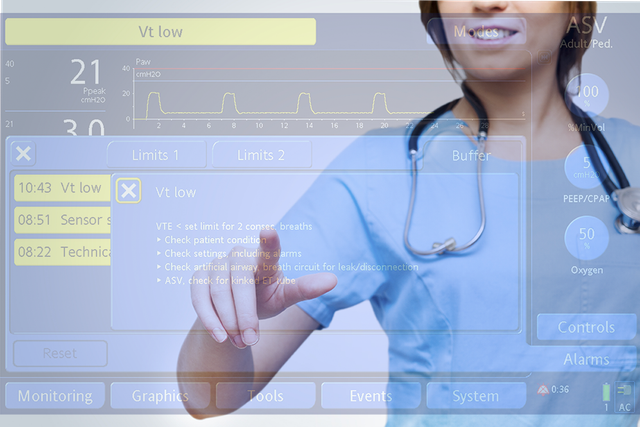
La asistencia está en camino. Ayuda en pantalla para solución de problemas
Siempre que hay un problema, el respirador le alerta con la señal luminosa de alarma, la señal acústica y la barra de mensajes.
La ayuda en pantalla le ofrece sugerencias sobre cómo resolver la alarma.

Adiós al respirador. Herramientas para implementar protocolos de retirada
Queremos que nuestros respiradores estén el menor tiempo posible conectados a sus pacientes. Por eso le proporcionamos herramientas que le ayudarán a implementar su protocolo de retirada.
Estas incluyen ayudas visuales y modos de ventilación diseñados para estimular la respiración espontánea.
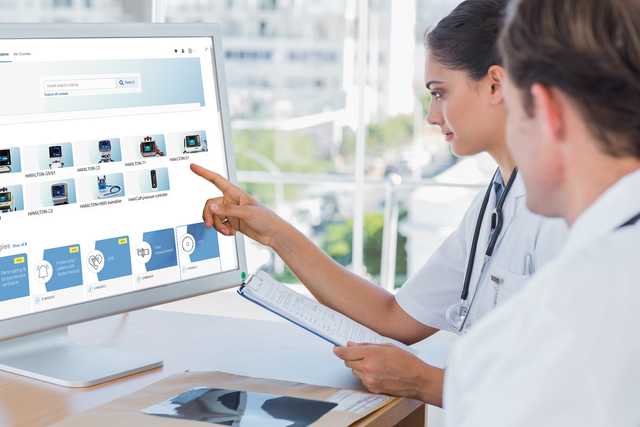
¡Cójale el truco! Rutas de aprendizaje y contenido educativo
Nuestra Academy en línea le ofrece rutas de aprendizaje fáciles de seguir para familiarizarse con las tecnologías y los productos de Hamilton Medical lo antes posible.
Para el futuro

Evolución constante. Ampliamos las capacidades de su respirador
Trabajamos continuamente para seguir desarrollando nuestros productos. Añadimos nuevas funciones y mejoramos las características actuales para garantizar que siempre tiene acceso a la última tecnología en ventilación a lo largo de toda la vida útil de sus respiradores.


Conozca una y las conocerá todas. Interfaz de usuario universal
No importa si se utilizan en la UCI, la sala de RM o durante los traslados, todos los respiradores de Hamilton Medical funcionan de la misma forma.
Nuestro Ventilation Cockpit (cuadro de control de la ventilación) integra datos completos en visualizaciones intuitivas.
Para la solución completa
Accesorios totalmente integrados
Desarrollamos nuestros accesorios para que pueda brindar la máxima seguridad posible a los pacientes teniendo en mente en todo momento la facilidad de uso. En la medida de lo posible, los integramos en nuestros respiradores para simplificar el funcionamiento de todo el sistema del respirador.
Nuestro material fungible

Hable con nuestros expertos. Hablemos de sus necesidades
Nuestro equipo de expertos en ventilación estará encantado de ayudarle a elegir el ventilador perfecto para su entorno clínico y ayudarle a alcanzar sus objetivos terapéuticos. Solicite un presupuesto personalizado o una llamada para obtener más información.
Más información
HAMILTON‑C6 la nueva generación de respiradores de UCI inteligentes ‑ folleto
HAMILTON‑C6 Especificaciones técnicas de SW 1.2.x
Hamilton Medical Una solución para cualquier situación
IntelliSync®+ folleto
Transport and storage solutions for the HAMILTON‑C6
Referencias
- 1. Kirakli C, Naz I, Ediboglu O, Tatar D, Budak A, Tellioglu E. A randomized controlled trial comparing the ventilation duration between adaptive support ventilation and pressure assist/control ventilation in medical patients in the ICU. Chest. 2015;147(6):1503‑1509. doi:10.1378/chest.14‑2599
- 2. Tam MK, Wong WT, Gomersall CD, et al. A randomized controlled trial of 2 protocols for weaning cardiac surgical patients receiving adaptive support ventilation. J Crit Care. 2016;33:163‑168. doi:10.1016/j.jcrc.2016.01.018
- 3. Zhu F, Gomersall CD, Ng SK, Underwood MJ, Lee A. A randomized controlled trial of adaptive support ventilation mode to wean patients after fast‑track cardiac valvular surgery. Anesthesiology. 2015;122(4):832‑840. doi:10.1097/ALN.0000000000000589
- 4. Beijers AJ, Roos AN, Bindels AJ. Fully automated closed‑loop ventilation is safe and effective in post‑cardiac surgery patients. Intensive Care Med. 2014;40(5):752‑753. doi:10.1007/s00134‑014‑3234‑7
- 5. Bialais E, Wittebole X, Vignaux L, et al. Closed‑loop ventilation mode (IntelliVent®‑ASV) in intensive care unit: a randomized trial. Minerva Anestesiol. 2016;82(6):657‑668.
- 6. Fot EV, Izotova NN, Yudina AS, Smetkin AA, Kuzkov VV, Kirov MY. Automated Weaning from Mechanical Ventilation after Off‑Pump Coronary Artery Bypass Grafting. Front Med (Lausanne). 2017;4:31. Published 2017 Mar 21. doi:10.3389/fmed.2017.00031
- 7. Arnal JM, Saoli M, Garnero A. Airway and transpulmonary driving pressures and mechanical powers selected by INTELLiVENT‑ASV in passive, mechanically ventilated ICU patients. Heart Lung. 2020;49(4):427‑434. doi:10.1016/j.hrtlng.2019.11.001
- 8. Chenelle CT, Oto J, Sulemanji D, Fisher DF, Kacmarek RM. Evaluation of an automated endotracheal tube cuff controller during simulated mechanical ventilation. Respir Care. 2015;60(2):183‑190. doi:10.4187/respcare.03387
- 100. Dhand R. New frontiers in aerosol delivery during mechanical ventilation. Respir Care. 2004;49(6):666‑677.
- 101. Waldrep JC, Dhand R. Advanced nebulizer designs employing vibrating mesh/aperture plate technologies for aerosol generation. Curr Drug Deliv. 2008;5(2):114‑119. doi:10.2174/156720108783954815
- 104. Baedorf Kassis E, Loring SH, Talmor D. Should we titrate peep based on end‑expiratory transpulmonary pressure?‑yes. Ann Transl Med. 2018;6(19):390. doi:10.21037/atm.2018.06.35
Notas al pie
- a. No disponible en todos los mercados
- b. Disponible solo para HAMILTON‑C6/G5/S1
- c. El modo Auto de IntelliCuff no está disponible en todos los mercados.
- e. El HAMILTON‑H900 no está aprobado para su uso durante traslados.
- f. También conocida como terapia con flujo alto de oxígeno. Esta terminología se puede usar indistintamente junto con terapia de cánulas nasales de flujo alto.


